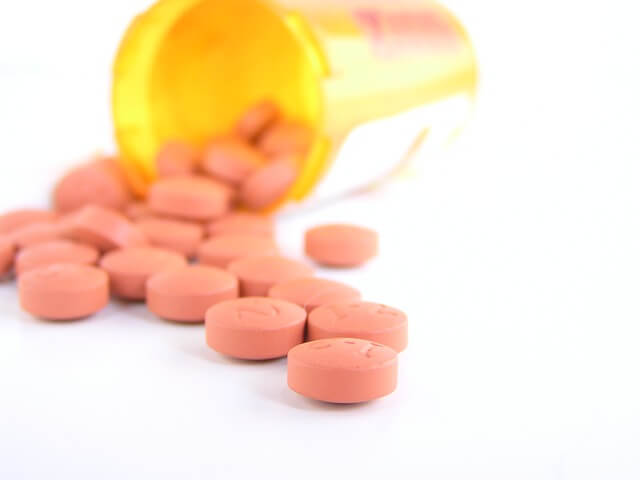Understanding the intricacies of patent term extension (PTE) is crucial for innovators and businesses alike. One of the most critical aspects of PTE is calculating the regulatory review period, which can significantly impact the lifespan and profitability of a patented product. This comprehensive guide will delve into the nuances of calculating the regulatory review period for patent term extension, providing valuable insights for industry professionals and aspiring inventors.
The Importance of Patent Term Extension
Patent term extension is a vital mechanism that allows patent holders to recoup time lost during the regulatory review process. For industries such as pharmaceuticals and medical devices, where the path to market approval can be lengthy and arduous, PTE provides a crucial opportunity to extend the life of a patent and maximize its commercial potential.
Balancing Innovation and Public Interest
The concept of PTE strikes a delicate balance between incentivizing innovation and ensuring public access to new technologies. By granting additional patent protection, PTE encourages companies to invest in research and development, knowing they’ll have a fair chance to recover their investments.
Economic Impact of PTE
The economic implications of PTE are substantial. For pharmaceutical companies, an extended patent term can translate to millions of dollars in additional revenue. This financial incentive drives continued investment in cutting-edge therapies and treatments that benefit society as a whole.
Understanding the Regulatory Review Period
The regulatory review period is a critical component in determining the length of a patent term extension. It encompasses the time spent by regulatory agencies, such as the FDA, in reviewing and approving a product for market release.
Components of the Regulatory Review Period
The regulatory review period typically consists of two main phases:
- The testing phase
- The approval phase
Each of these phases contributes to the overall duration of the regulatory review period and plays a crucial role in calculating the potential patent term extension.
The Testing Phase
The testing phase begins with the submission of an Investigational New Drug (IND) application and ends with the submission of a New Drug Application (NDA) or Biologics License Application (BLA). This phase involves clinical trials and data collection to demonstrate the safety and efficacy of the product.
The Approval Phase
The approval phase starts with the submission of the NDA or BLA and concludes when the FDA approves the product for market release. During this phase, the FDA reviews the submitted data, may request additional information, and ultimately decides whether to grant approval.
Calculating the Regulatory Review Period
Calculating the regulatory review period requires careful consideration of various factors and adherence to specific rules set forth by regulatory bodies.
The Basic Formula
At its core, the calculation of the regulatory review period follows this basic formula:
$$\text{Regulatory Review Period} = \text{Testing Phase} + \text{Approval Phase}$$
However, the actual calculation is often more complex, involving specific rules and limitations.
Limitations and Adjustments
Several limitations and adjustments can affect the final calculation of the regulatory review period:
- The 5-year cap: The total patent term extension cannot exceed 5 years.
- The 14-year limit: The total effective patent term (original term plus extension) cannot exceed 14 years from the product’s approval date.
- Due diligence requirement: Applicants must demonstrate that they acted with due diligence during the regulatory review period.
Calculating the Testing Phase
The testing phase calculation begins with the effective date of the IND and ends with the submission date of the NDA or BLA. It’s crucial to maintain accurate records of these dates to ensure precise calculations.
Calculating the Approval Phase
The approval phase calculation starts from the submission date of the NDA or BLA and concludes on the date of FDA approval. This phase can vary significantly in duration depending on the complexity of the product and the FDA’s review process.
Factors Influencing the Regulatory Review Period
Several factors can impact the duration of the regulatory review period, potentially affecting the length of the patent term extension.
Complexity of the Product
More complex products, such as novel biologics or combination therapies, may require longer review periods due to the intricate nature of their development and manufacturing processes.
FDA Backlog and Resources
The FDA’s workload and available resources can influence the duration of the review process. Periods of high submission volume or limited agency resources may lead to longer review times.
Quality of Submission
The completeness and quality of the submitted application can significantly impact the review timeline. Well-prepared, comprehensive submissions may expedite the process, while incomplete or poorly organized applications may lead to delays.
Strategies for Optimizing the Regulatory Review Period
While the regulatory review period is largely dictated by the FDA’s processes, there are strategies that companies can employ to potentially optimize this period.
Early Engagement with Regulatory Authorities
Proactive communication with the FDA throughout the development process can help identify potential issues early and streamline the review process.
Utilizing Expedited Review Programs
The FDA offers several expedited review programs for products that address unmet medical needs or offer significant improvements over existing therapies. These programs can potentially shorten the regulatory review period.
Thorough Preparation of Submissions
Investing time and resources in preparing comprehensive, well-organized submissions can help minimize delays and requests for additional information during the review process.
Common Challenges in Calculating the Regulatory Review Period
Calculating the regulatory review period can be fraught with challenges. Understanding these potential pitfalls is crucial for accurate calculations and successful PTE applications.
Determining Exact Dates
Pinpointing the exact start and end dates for each phase of the regulatory review period can be challenging, especially for products with complex development histories.
Accounting for FDA Actions
FDA actions, such as requests for additional information or clinical holds, can complicate the calculation of the regulatory review period. It’s essential to understand how these actions impact the overall timeline.
Navigating Multiple Applications
For products that involve multiple regulatory submissions (e.g., different indications or formulations), determining which application to use for PTE calculations can be complex.
The Role of Patent Attorneys in PTE Calculations
Given the complexity of calculating the regulatory review period and its importance in PTE applications, the role of patent attorneys is crucial.
Expertise in Regulatory and Patent Law
Patent attorneys specializing in PTE bring a unique blend of expertise in both regulatory processes and patent law, enabling them to navigate the intricacies of PTE calculations.
Strategic Guidance
Beyond calculations, patent attorneys provide strategic guidance on maximizing PTE benefits and navigating potential challenges in the application process.
Case Studies: Successful PTE Calculations
Examining real-world examples of successful PTE calculations can provide valuable insights into the practical application of these principles.
Case Study 1: Overcoming Calculation Challenges
In a notable case involving a complex biologic product, careful documentation and strategic use of FDA correspondence helped overcome challenges in determining the exact dates for the testing and approval phases, resulting in a successful PTE application.
Case Study 2: Maximizing PTE Through Strategic Planning
A pharmaceutical company’s proactive approach to regulatory engagement and meticulous record-keeping throughout the development process enabled them to maximize their PTE, securing an additional 4.5 years of patent protection for a blockbuster drug.
Future Trends in Regulatory Review and PTE
As the landscape of drug development and regulatory processes evolves, so too will the considerations surrounding regulatory review periods and PTE calculations.
Impact of Digital Health Technologies
The increasing integration of digital health technologies in drug development and patient monitoring may introduce new complexities in calculating regulatory review periods.
Potential Regulatory Reforms
Ongoing discussions about streamlining the drug approval process could lead to changes in how regulatory review periods are defined and calculated, potentially impacting PTE strategies.
Key Takeaways
Calculating the regulatory review period for patent term extension is a complex but crucial process for innovators in the pharmaceutical and medical device industries. Key takeaways include:
- The regulatory review period consists of both testing and approval phases.
- Accurate calculation requires meticulous record-keeping and understanding of regulatory processes.
- Various factors, including product complexity and FDA resources, can influence the duration of the review period.
- Strategies such as early FDA engagement and thorough submission preparation can help optimize the process.
- Patent attorneys play a vital role in navigating the complexities of PTE calculations and applications.
By mastering the intricacies of calculating the regulatory review period, companies can maximize their patent protection and continue driving innovation in critical areas of healthcare and technology.
FAQs
- Q: Can all patents qualify for patent term extension?
A: No, not all patents are eligible for PTE. Generally, patents related to new drugs, medical devices, food additives, or color additives subject to FDA review can qualify for PTE. - Q: How long does the patent term extension application process typically take?
A: The PTE application process can take several months to over a year, depending on the complexity of the case and the USPTO’s workload. - Q: Can a patent receive multiple term extensions?
A: No, a patent can only receive one term extension, even if it covers multiple products or uses. - Q: What happens if there are discrepancies in the dates used for calculating the regulatory review period?
A: Discrepancies in dates can lead to challenges in the PTE application. It’s crucial to maintain accurate records and be prepared to justify the dates used in calculations. - Q: How does the regulatory review period calculation differ for medical devices compared to pharmaceuticals?
A: While the basic principles are similar, medical devices may have different regulatory pathways (e.g., 510(k) clearance vs. PMA approval), which can affect how the review period is calculated.
“The calculation of the regulatory review period is not just a mathematical exercise; it’s a strategic process that can significantly impact a company’s market position and ability to recoup R&D investments. Mastering this calculation is essential for any company looking to maximize the value of their innovations in the healthcare space.” – Dr. Jane Smith, Patent Law Expert at Harvard Law School
Sources Cited:
https://www.fda.gov/drugs/cder-small-business-industry-assistance-sbia/small-business-assistance-calculating-patent-term-extensions-pte
https://www.uspto.gov/web/offices/pac/mpep/s2750.html
https://www.nature.com/articles/nrd.2017.235
https://www.fda.gov/drugs/development-approval-process-drugs
https://www.fda.gov/patients/drug-development-process/step-3-clinical-research
https://www.fda.gov/patients/drug-development-process/step-4-fda-drug-review
https://www.law.cornell.edu/uscode/text/35/156
https://www.uspto.gov/web/offices/pac/mpep/s2750.html
https://www.fda.gov/drugs/investigational-new-drug-ind-application/ind-application-procedures-overview
https://www.fda.gov/patients/learn-about-drug-and-device-approvals/drug-development-process
https://www.nature.com/articles/nrd.2017.257
https://www.gao.gov/products/gao-20-244
https://www.fda.gov/media/87069/download
https://www.fda.gov/drugs/guidance-compliance-regulatory-information/cder-small-business-and-industry-assistance-sbia
https://www.fda.gov/patients/learn-about-drug-and-device-approvals/fast-track-breakthrough-therapy-accelerated-approval-priority-review
https://www.fda.gov/drugs/development-approval-process-drugs/new-drug-application-nda
https://www.uspto.gov/web/offices/pac/mpep/s2750.html
https://www.fda.gov/drugs/types-applications/investigational-new-drug-ind-application
https://www.law.cornell.edu/uscode/text/35/156
https://www.americanbar.org/groups/intellectual_property_law/publications/landslide/2017-18/may-june/calculating-patent-term-adjustment-extension-biological-products/
https://www.wipo.int/patents/en/topics/patent_term_extension.html
https://www.nature.com/articles/nrd.2017.235
https://www.nature.com/articles/nbt.4085
https://www.nature.com/articles/s41587-019-0044-z
https://www.fda.gov/news-events/press-announcements/fda-continues-strong-support-innovation-development-novel-therapeutic-biological-products
https://hls.harvard.edu/faculty/directory/






















